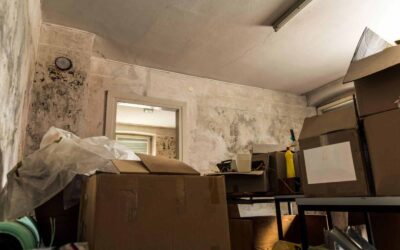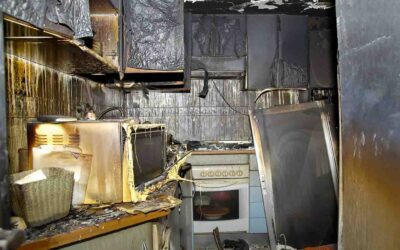Each year, property owners in the United States spend millions of dollars on mold remediation: the professional removal of fungal infestations. Removing mold that has reached an advanced stage of infestation is often a major project with the goal of eliminating all traces of fungal growth. This means the mold remediation process tends to be both invasive and expensive, as contractors work to ensure that no affected areas remain to produce new spores and trigger a renewed infestation.
However, property owners may continue to notice the tell-tale signs of the presence of mold, even after extensive remediation efforts have taken place. This leaves them wondering: Can mold return after remediation? Unfortunately, it can.
In the following post from Biodynamic, we’ll discuss why your mold problem seems to be recurring and what you can do to minimize the chance of mold returning and secure your building against future infestations.
What Causes Mold?
The term “mold” refers to a large family of related organisms that belong to the kingdom of Fungi and spread using airborne spores. They are not closely related to plants, and consequently, they do not have the same requirements for survival as plants do. Namely, the fungi that cause mold do not photosynthesize, and therefore, they do not require sunlight to grow and spread. In fact, the ultraviolet radiation produced by the sun is harmful to mold spores, and for this reason, mold spreads much more effectively in darker areas. In buildings, this is frequently in attics, behind walls, in basements, and in other hidden areas.
Mold requires a substrate to anchor to and grow from. As they spread, the spores consume this material, which is why molds are most commonly found on organic compounds such as wood, paper, natural fabrics, and so on. They also prefer porous surfaces, such as carpets, as the small gaps give mold spores an area to anchor and accumulate.
All known life on earth requires a source of moisture, and mold is no exception. Damp areas, particularly ones that receive a steady flow of water—such as a leaky attic or the cabinet space under a sink—are where mold is most likely to grow and thrive.
Mold Remediation: How It Works
The mold remediation process has three major goals:
- Remove the mold
- Restore the damaged areas to their pre-loss condition
- Eliminate the conditions that allowed the infestation to arise in the first place
Before mold remediation specialists can begin the removal work, the infestation must first be diagnosed. This can be done visually or with the help of advanced detection technology. The next step is to thoroughly clean affected surfaces. This includes treating all objects that have been contaminated.
At Biodynamic, we utilize a patented bio-remediation process to remove even the smallest contaminants from the buildings. Bio-remediation technology utilizes chemical-free microbial cleaners to safely and completely eliminate mold.
Since mold spreads by releasing spores into the air, thorough remediation requires cleaning particulate matter from the air as well. This is done with the aid of high-end filtration systems that are vastly more efficient than the conventional HEPA filters found in most department stores.
Why Mold Returns
Now for the question of the hour: Can mold return after remediation? Unfortunately, yes. Mold is nothing if not persistent, and even after remediation, property owners may see the tell-tale signs of mold begin to return.
One of the most common issues we have noticed when mold infestations recur is that the spores and other particulate matter simply were not removed effectively. Many home and building owners choose DIY mold removal, and while this can work well for smaller infestations, it may not be sufficient for larger or more serious infestations. Mycotoxin fragments produced by mold may be too small for conventional cleaning methods to completely remove, making it easy for mold to make a quick return.
Another common reason why mold problems return is because contaminated materials have been kept in the building. If even a small amount of actively growing mold is allowed to remain, then it will continue to spread spores into the indoor environment and can trigger another full-scale infestation. If an object cannot be fully cleaned so that no traces of mold remain, it should be disposed of.
Of course, it’s also possible that the original cause of the mold infestation was not adequately addressed. For example, if mold begins to grow due to a leak, the problem is always at risk of returning until the leak has been fully repaired, removing the moisture source from the mold entirely. It’s also possible for a new source of water to manifest to take the place of the first. Or for the source to be an ongoing issue, such as the wet weather conditions of the Pacific Northwest winter.
Long-Term Mold Prevention
Preventing the recurrence of a mold infestation is a matter of being diligent on all fronts. Often, you may need to make certain structural changes to the building to ensure that the conditions leading to mold growth are completely eliminated. For instance, improving ventilation in a building can go a long way toward preventing mold recurrence. Increasing airflow helps dry damp spots more quickly, making it more difficult for mold to take root. Just running your kitchen and bathroom fans regularly can make an environment less mold-friendly.
Controlling the humidity in the building is another critical step you can take for long-term mold prevention. The more humid the environment, the more likely it is to trigger a mold infestation, so invest in dehumidifiers for at-risk areas in your space.
Finally, if you have had mold problems in the past, or if your building is vulnerable to a potential infestation, then it’s a good idea to invest in periodic inspections. If any signs of mold are detected, you can have it addressed and removed quickly, before it becomes a larger issue.
If you are facing a mold problem in your building, removing it completely and preventing it from returning starts with proper removal. Contact the mold remediation professionals at Biodynamic. With our patented bio-remediation process, we’ll ensure that your building is clean and mold-free and then provide ongoing support with mold prevention services.


